Table of Contents
Who doesn't love a good bowl of mac and cheese? But let's be honest, not all mac and cheese is created equal. Are you tired of dry, bland mac and cheese that leaves you wanting more? Do you dream of a dish so rich and decadent it redefines comfort food? Then you've come to the right place. This guide is dedicated to unlocking the secrets of **extra creamy classic mac and cheese**, the kind that makes you close your eyes and savor every single bite.
Perfecting the Cheese Sauce for Extra Creamy Mac and Cheese
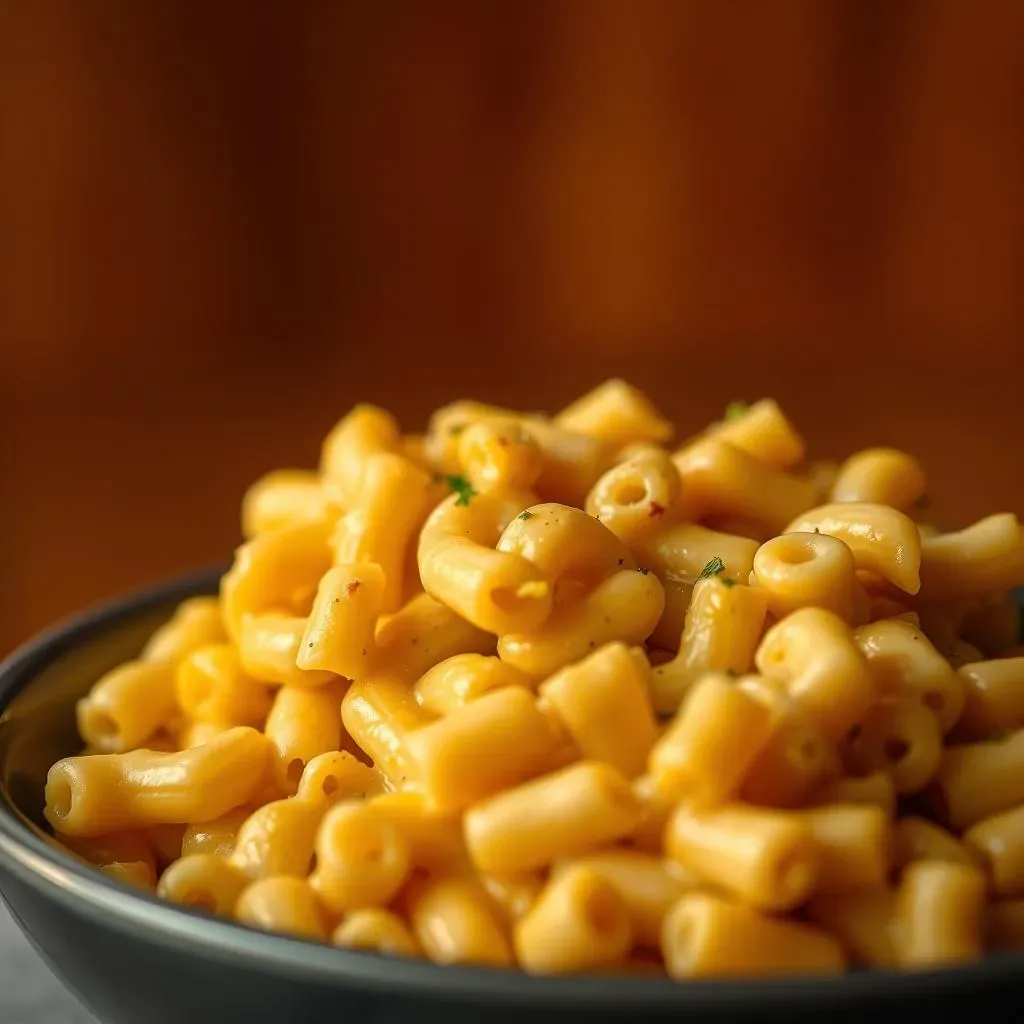
Perfecting the Cheese Sauce for Extra Creamy Mac and Cheese
The Foundation: Roux and Milk
The secret to an **extra creamy classic mac and cheese** lies in the cheese sauce, and the foundation of that sauce is a roux. A roux, simply put, is a mixture of equal parts butter and flour cooked together. This magical combination acts as a thickening agent, giving your cheese sauce that luscious, velvety texture we all crave. Don't rush this step! Cooking the roux properly is crucial. You want to cook it long enough to eliminate the raw flour taste, but not so long that it browns too much. Aim for a light golden color and a nutty aroma.
Once your roux is ready, it's time to introduce the milk. Whole milk is your best bet for maximum creaminess, but you can also use 2% if you're feeling slightly virtuous. Pour the milk in gradually, whisking constantly to prevent lumps from forming. This is where patience comes in handy. Keep whisking over medium heat until the sauce thickens to a smooth, flowing consistency. It should coat the back of a spoon without being too thick or gloppy. If you do end up with lumps, don't panic! An immersion blender can be your best friend here. Just blend the sauce until it's smooth and creamy.
The Cheese Factor: Melting and Emulsification
Now for the star of the show: the cheese! Adding cheese to your sauce seems simple, but it's where things can go wrong if you're not careful. The key is to add the cheese gradually, in small handfuls, and stir constantly until it's completely melted and incorporated. This helps prevent the cheese from clumping or becoming grainy. Low and slow is the name of the game here. Keep the heat on low to prevent the cheese from overheating and separating.
Emulsification is the process of binding the cheese and milk together to create a smooth, cohesive sauce. A little trick to aid emulsification is to add a touch of acidity. A splash of lemon juice or a dash of Dijon mustard can work wonders. These ingredients not only enhance the flavor of the cheese sauce but also help to stabilize it, preventing it from becoming greasy or separating. Trust me, this small addition makes a big difference in the final result. Remember, we're aiming for that perfect **extra creamy classic mac and cheese** experience!
Ingredient | Purpose | Tip |
|---|---|---|
Butter & Flour | Create Roux (thickening agent) | Cook to light golden color |
Whole Milk | Creamy base of sauce | Add gradually, whisking constantly |
Cheese | Flavor and texture | Add in small handfuls, low heat |
Lemon Juice/Dijon Mustard | Emulsification and flavor | Add a small splash or dash |
Choosing the Right Cheese for Your Classic Mac and Cheese
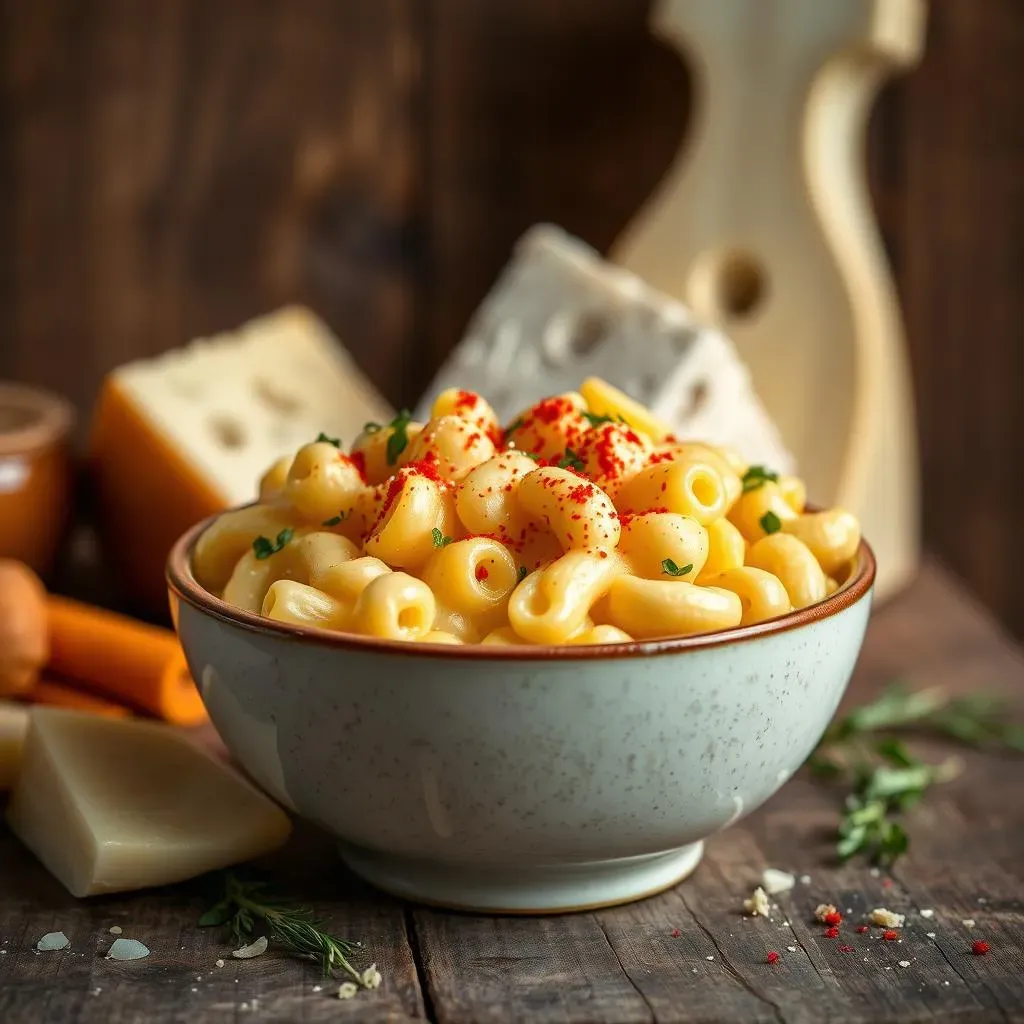
Choosing the Right Cheese for Your Classic Mac and Cheese
The Sharpness Spectrum: Mild to Bold
**Choosing the right cheese** is where the magic truly happens. The cheese (or cheeses!) you select will dictate the overall flavor profile of your **classic mac and cheese**. Think about what you're craving: a mild, comforting hug in a bowl, or a bold, cheesy punch that wakes up your taste buds? For a classic, crowd-pleasing mac, a blend of cheeses is often the way to go. This allows you to balance sharpness, creaminess, and meltability. A good starting point is a combination of cheddar (for sharpness), Gruyere (for nutty flavor and melt), and Monterey Jack (for extra creaminess). But don't be afraid to experiment!
When selecting cheddar, consider the sharpness level. Mild cheddar will give you a subtle cheese flavor, while sharp cheddar will provide a more pronounced tang. Extra sharp cheddar can be a bit overpowering on its own, so it's best to use it in combination with milder cheeses. Remember to shred your own cheese! Pre-shredded cheese often contains cellulose, which can prevent it from melting smoothly. Grating your own cheese ensures a creamy, lump-free sauce. It might take a few extra minutes, but the difference in texture and flavor is well worth the effort.
Melting Power: The Importance of Meltability
Not all cheeses melt equally well. Some cheeses, like Parmesan, are delicious but don't melt into a smooth sauce. Other cheeses, like mozzarella, can become stringy and rubbery if overheated. The ideal cheeses for mac and cheese should melt easily and evenly, creating a luscious, creamy texture. Gruyere is a fantastic choice for its exceptional meltability and nutty flavor. Fontina is another great option, offering a rich, buttery flavor and a smooth, creamy texture. If you're looking for a cheese with a bit more personality, try using a smoked Gouda. The smoky flavor adds a unique depth to the mac and cheese, elevating it to a whole new level.
Consider the moisture content of the cheese. Cheeses with higher moisture content, like Monterey Jack and Havarti, tend to melt more smoothly than drier cheeses like Parmesan. If you're using a drier cheese, you may need to add a bit more milk to your sauce to compensate. Don't be afraid to mix and match different cheeses to create your own signature blend. The possibilities are endless! Just remember to choose cheeses that complement each other in terms of flavor and meltability.
"The only limit to cheese is your imagination." - *Some Cheese Lover*
Beyond the Basics: Exploring Cheese Combinations
Once you've mastered the basics, it's time to get creative with your cheese choices. Explore different combinations to discover your perfect mac and cheese flavor profile. For a classic, tangy mac, try a combination of sharp cheddar, Gruyere, and a touch of blue cheese. The blue cheese adds a funky, savory note that pairs beautifully with the sharpness of the cheddar. If you're looking for a milder, more kid-friendly mac, try a combination of mild cheddar, Monterey Jack, and provolone. The provolone adds a subtle sweetness that complements the other cheeses.
For a truly decadent mac, consider adding a touch of cream cheese or mascarpone to your cheese sauce. These cheeses add a luxurious creaminess that takes the mac and cheese to the next level. Just be careful not to add too much, as they can make the sauce too thick. A little goes a long way! You can also experiment with different flavored cheeses, such as pepper jack or garlic and herb cheddar. These cheeses add a burst of flavor to the mac and cheese, making it even more exciting. The key is to have fun and experiment until you find the cheese combination that you love the most. Remember, the best **extra creamy classic mac and cheese** is the one that you enjoy the most!
Cheese Type | Flavor Profile | Meltability | Best Uses |
|---|---|---|---|
Sharp Cheddar | Tangy, Bold | Good | Classic Mac, Adds sharpness |
Gruyere | Nutty, Complex | Excellent | Smooth sauce, Great flavor |
Monterey Jack | Mild, Creamy | Excellent | Extra creaminess, Mild flavor |
Smoked Gouda | Smoky, Rich | Good | Unique flavor twist |
Cream Cheese | Tangy, Creamy | Good | Adds luxurious creaminess |
Tips for Cooking Macaroni to Achieve the Perfect Al Dente Texture
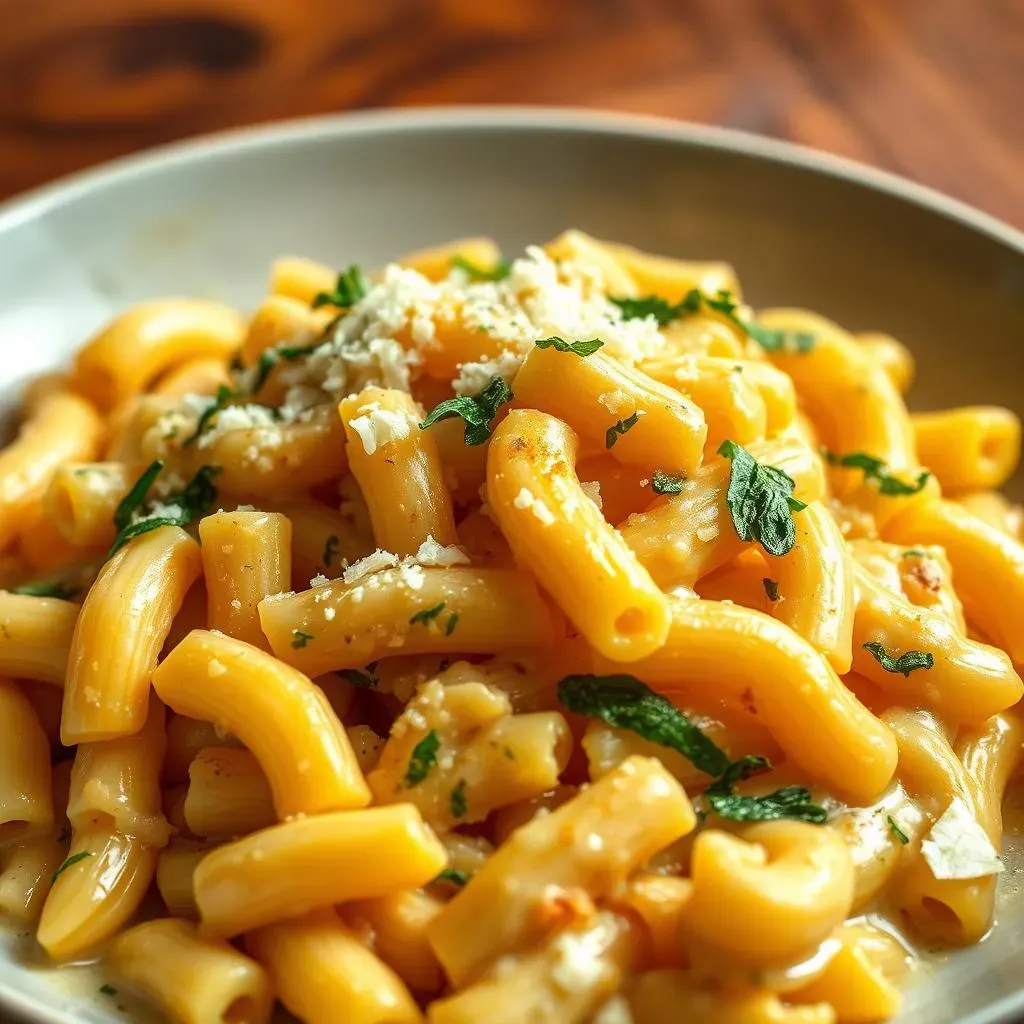
Tips for Cooking Macaroni to Achieve the Perfect Al Dente Texture
The Golden Rule: Salty Water and a Rolling Boil
Alright, so you've got your cheese sauce game on point, and you've chosen a killer cheese blend. But all that effort will be wasted if your macaroni is mushy or undercooked! The key to achieving that perfect al dente texture starts with the water. Don't skimp on the salt! Seriously, add a generous amount of salt to the water before you even add the pasta. This seasons the pasta from the inside out and helps prevent it from sticking together. Think "salty like the sea."
Next, make sure the water is at a rolling boil before you add the macaroni. A rolling boil means the water is bubbling vigorously, even when you stir it. Adding the pasta to water that isn't hot enough will result in gummy, sticky noodles. Once you add the macaroni, stir it immediately and frequently for the first few minutes to prevent sticking. And for goodness sake, don't add oil to the water! This is a common misconception. Oil can actually prevent the sauce from clinging to the pasta properly. We want that cheesy goodness to coat every single noodle, right?
Timing is Everything: Don't Overcook!
Now, here's the most crucial part: cooking the macaroni to al dente perfection. Al dente, which means "to the tooth" in Italian, refers to pasta that is firm to the bite, with a slight resistance in the center. Overcooked macaroni will be mushy and fall apart, while undercooked macaroni will be hard and chalky. Neither is desirable in **extra creamy classic mac and cheese**. Start checking the pasta for doneness a minute or two before the package directions suggest. The best way to test is to simply taste it! Fish out a noodle, let it cool slightly, and take a bite. It should be firm but not hard, with a slight bite in the center.
Once the macaroni is cooked to al dente, drain it immediately. Don't rinse the pasta unless you're making a cold pasta salad. Rinsing removes the starch that helps the sauce cling to the noodles. If you're not adding the macaroni to the cheese sauce right away, toss it with a little butter or olive oil to prevent it from sticking together. And remember, slightly undercooking the macaroni is always better than overcooking it. The pasta will continue to cook a bit in the hot cheese sauce, so you want to make sure it doesn't become too soft.
"Perfecting pasta is an art, mastering the al dente is a triumph." - *Pasta Proverb*
Adding Extra Flavor to Your Extra Creamy Classic Mac and Cheese Recipe
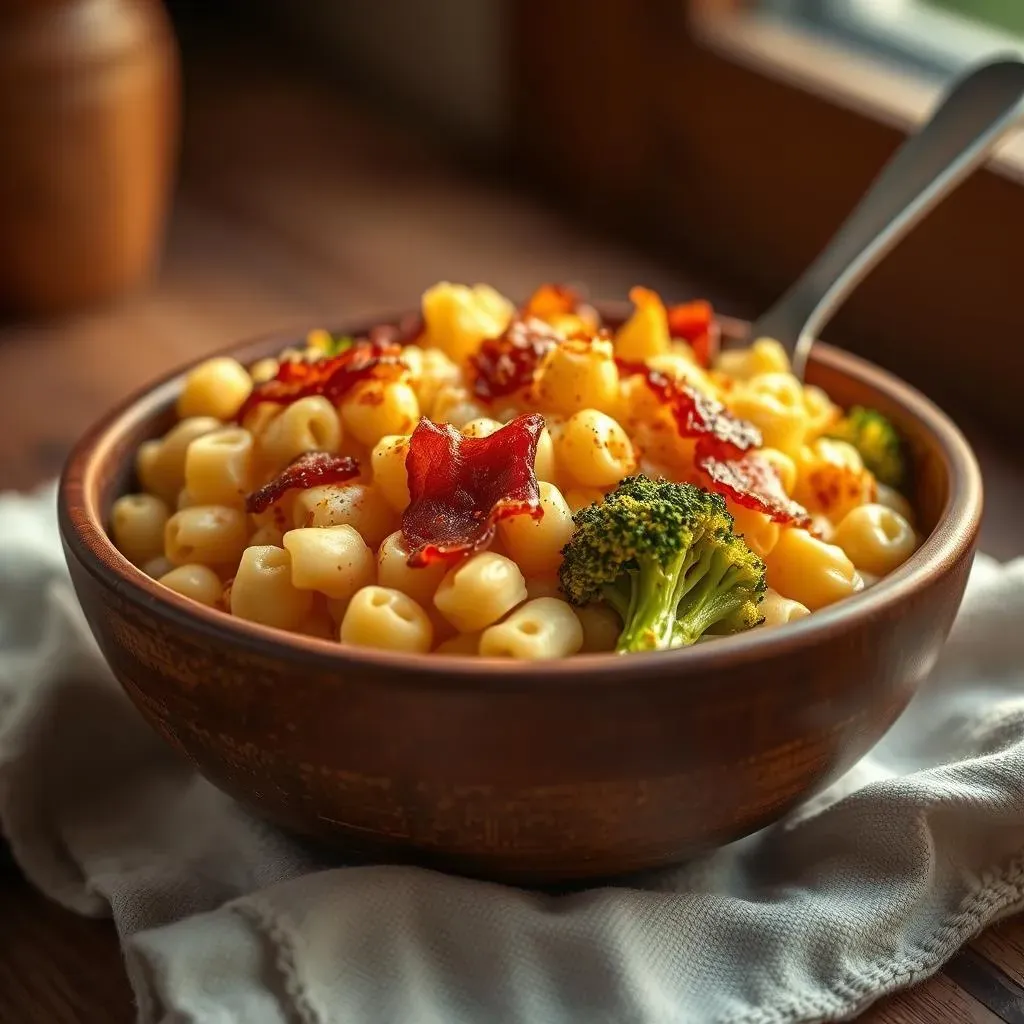
Adding Extra Flavor to Your Extra Creamy Classic Mac and Cheese Recipe
Spice it Up: Adding Heat and Depth
Alright, you've nailed the creamy, cheesy base. Now let's talk about kicking things up a notch! Adding spices is a fantastic way to introduce depth and complexity to your **extra creamy classic mac and cheese recipe**. Think beyond just salt and pepper. A pinch of smoked paprika can add a subtle smoky flavor that complements the cheese beautifully. A dash of cayenne pepper will bring a pleasant warmth, while a sprinkle of nutmeg adds a touch of cozy sweetness. Don't be afraid to experiment with different spice combinations to find your perfect balance.
For those who like a bit more heat, consider adding some chopped jalapeños or a few dashes of hot sauce. Start with a small amount and taste as you go, because you can always add more, but you can't take it away! If you're using jalapeños, be sure to remove the seeds and membranes for a milder flavor. And if you're using hot sauce, choose one that complements the cheese flavors. A tangy, vinegar-based hot sauce can cut through the richness of the cheese, while a smoky chipotle hot sauce will add another layer of flavor.
Veggie Power: Sneaking in Some Goodness
Mac and cheese doesn't have to be a purely indulgent dish! You can easily sneak in some veggies to add nutrients and flavor. Roasted vegetables are a great option. Roasting brings out the natural sweetness of vegetables, making them even more delicious. Try adding roasted broccoli, cauliflower, or Brussels sprouts to your mac and cheese. The slightly charred edges of the roasted vegetables will add a pleasant textural contrast to the creamy sauce.
Sautéed mushrooms are another fantastic addition. Sauté them in butter or olive oil with a little garlic and thyme for a savory flavor boost. You can also add some wilted spinach or kale to your mac and cheese. These leafy greens add a boost of vitamins and minerals without overpowering the flavor. If you're feeling adventurous, try adding some caramelized onions. The sweet, savory flavor of caramelized onions pairs perfectly with the cheese and adds a touch of sophistication to the dish.
"A little veggie never hurt nobody...especially in mac and cheese!" - *Wise Chef Saying*
Protein Boost: Meaty and Savory Additions
Want to make your **extra creamy classic mac and cheese** even more substantial? Adding protein is the way to go. Crispy bacon is a classic addition that never fails to impress. Cook the bacon until it's nice and crispy, then crumble it over the mac and cheese. The salty, smoky flavor of the bacon is a perfect complement to the cheese.
Shredded chicken or pulled pork are also great options. These proteins add a hearty, savory element to the dish. If you're using leftover chicken or pork, simply shred it and stir it into the mac and cheese. You can also cook the chicken or pork specifically for the mac and cheese, seasoning it with your favorite spices. For a vegetarian option, try adding some cooked lentils or chickpeas. These legumes add protein and fiber, making the mac and cheese a more balanced meal. No matter what protein you choose, be sure to add it in moderation so it doesn't overpower the cheese flavors.
Flavor Boost | Ingredient | How to Use |
|---|---|---|
Spice | Smoked Paprika | Pinch for smoky flavor |
Heat | Chopped Jalapeños | Small amount, remove seeds |
Veggie | Roasted Broccoli | Add after roasting |
Savory | Sautéed Mushrooms | Sauté with garlic & thyme |
Protein | Crispy Bacon | Crumble on top |
Baking or Serving Fresh: Finishing Your Extra Creamy Classic Mac and Cheese
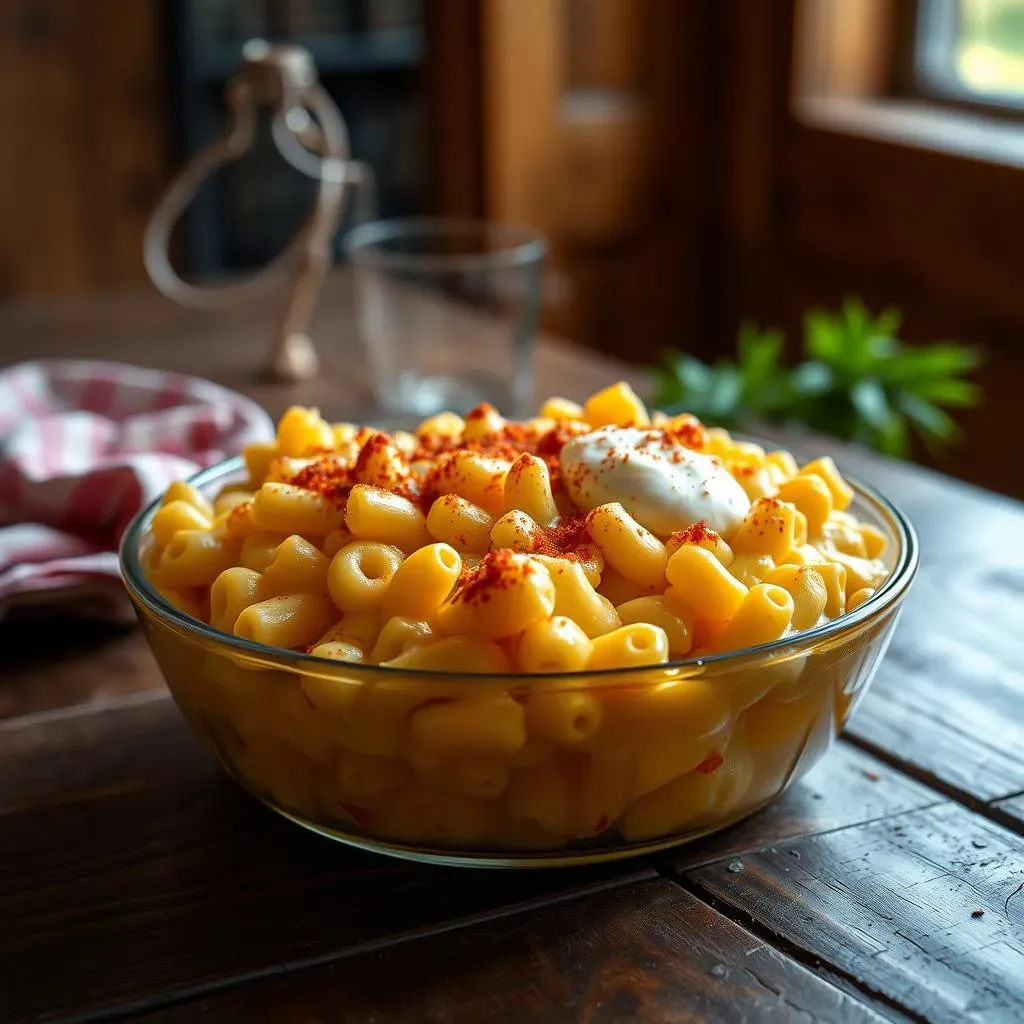
Baking or Serving Fresh: Finishing Your Extra Creamy Classic Mac and Cheese
The Case for Baking: Crispy Top and Melty Interior
So, you've got a pot of **extra creamy classic mac and cheese** that's just begging to be devoured. But should you bake it or serve it fresh? That is the question! Baking adds a whole new dimension to mac and cheese, creating a delightful contrast between the crispy, golden-brown top and the gooey, melty interior. It's like a warm hug on a cold day. If you're going for that comforting, casserole-like experience, baking is definitely the way to go. Plus, baking is a great option if you're making mac and cheese for a crowd, as it keeps the dish warm and allows you to prepare it ahead of time.
To bake your mac and cheese, simply transfer it to a greased baking dish. You can top it with breadcrumbs for extra crunch, or sprinkle it with more cheese for an even cheesier experience. Bake in a preheated oven at 350°F (175°C) for about 20-25 minutes, or until the top is golden brown and bubbly. Keep an eye on it to prevent the top from burning. If it starts to brown too quickly, you can tent it with foil. Let the mac and cheese cool for a few minutes before serving, as it will be extremely hot!
"Baking mac and cheese is like giving it a warm, cheesy blanket." - *Mac and Cheese Enthusiast*
Serving Fresh: Immediate Gratification and Ultimate Creaminess
On the other hand, serving your **extra creamy classic mac and cheese** fresh allows you to experience the full glory of its creamy texture. There's something incredibly satisfying about digging into a bowl of freshly made mac and cheese, where the sauce is still perfectly smooth and the noodles are coated in cheesy goodness. Serving fresh is also a quicker option, as you don't have to wait for the mac and cheese to bake. This is perfect for those times when you need a comforting meal in a hurry. Plus, serving fresh allows you to control the consistency of the sauce more precisely. You can add a little extra milk or cream to thin it out if needed.
To serve your mac and cheese fresh, simply spoon it into bowls and garnish with your favorite toppings. A sprinkle of fresh parsley or chives adds a pop of color and freshness. You can also top it with a drizzle of hot sauce or a dollop of sour cream for extra flavor. And if you're feeling fancy, you can even add a sprinkle of truffle oil for a decadent touch. No matter how you choose to serve it, make sure to enjoy it while it's still warm and creamy. After all, the best **extra creamy classic mac and cheese** is the one that you enjoy the most, whether it's baked or served fresh!
Finishing Style | Pros | Cons | Best For |
|---|---|---|---|
Baking | Crispy top, melty interior, make-ahead | Takes longer, can dry out | Crowds, Casserole lovers |
Serving Fresh | Ultimate creaminess, quick, easy | Doesn't have crispy top, less make-ahead | Immediate satisfaction, Creamy texture fans |
The Creamy, Cheesy Finale: Your Mac and Cheese Masterpiece
Congratulations, you've reached the end of our cheesy journey! By now, you're equipped with all the knowledge you need to create an **extra creamy classic mac and cheese** that will knock everyone's socks off. Remember, the key is in the quality of your ingredients and the care you put into each step. Don't be afraid to experiment with different cheeses and flavor combinations to find your signature mac and cheese. Whether you stick to the classic recipe or venture into bold new territories, the most important thing is to enjoy the process and savor the delicious results. So go ahead, whip up a batch of creamy, cheesy goodness and share the love. After all, a perfect bowl of mac and cheese is best enjoyed with good company!